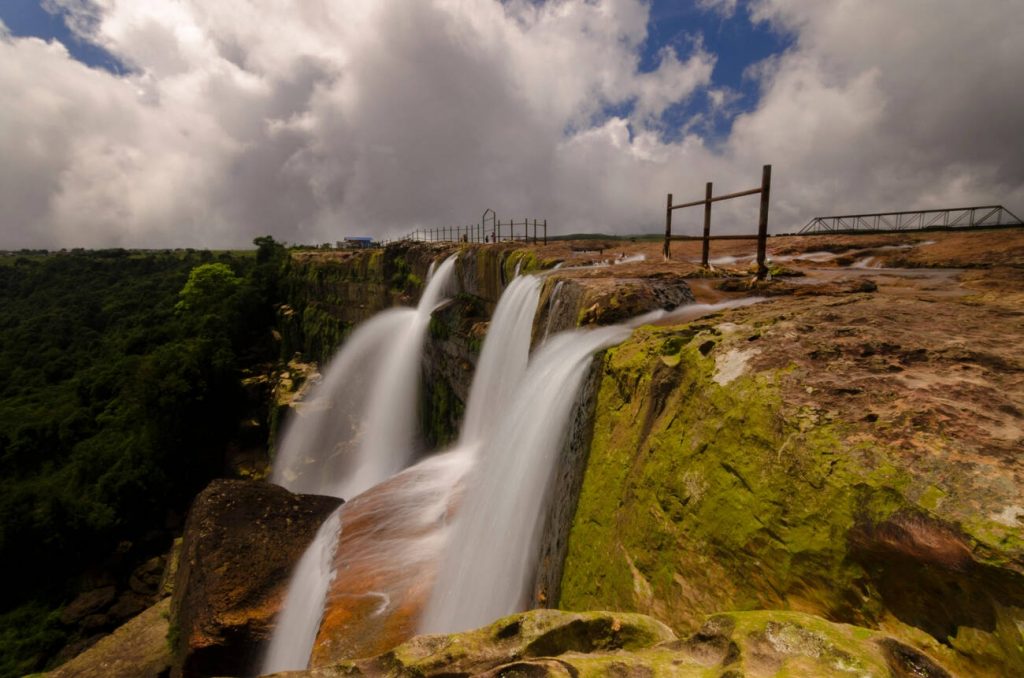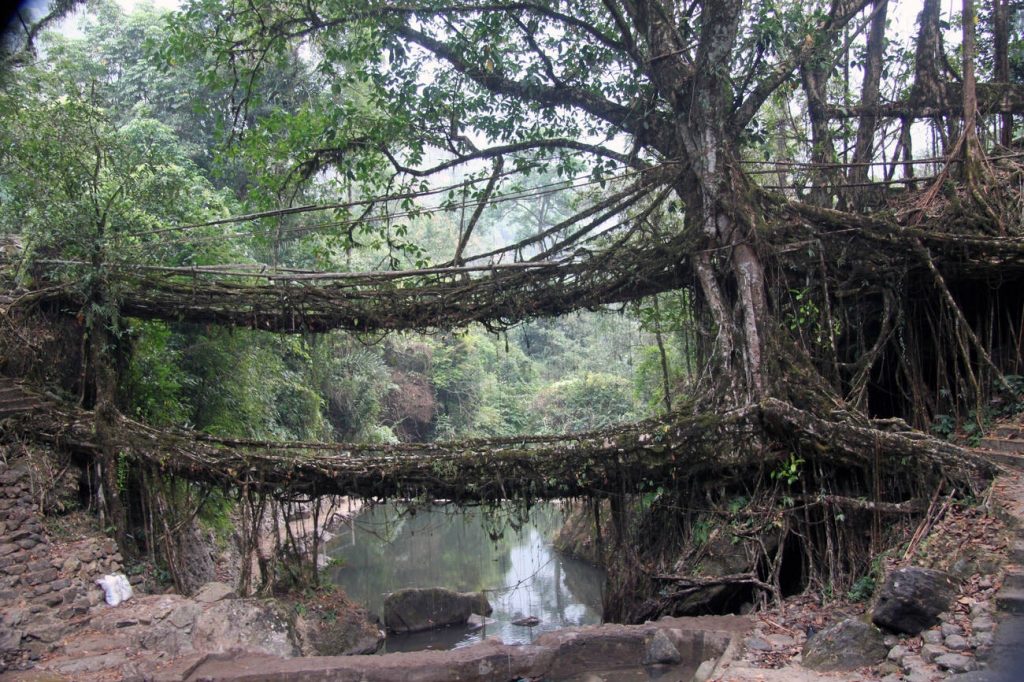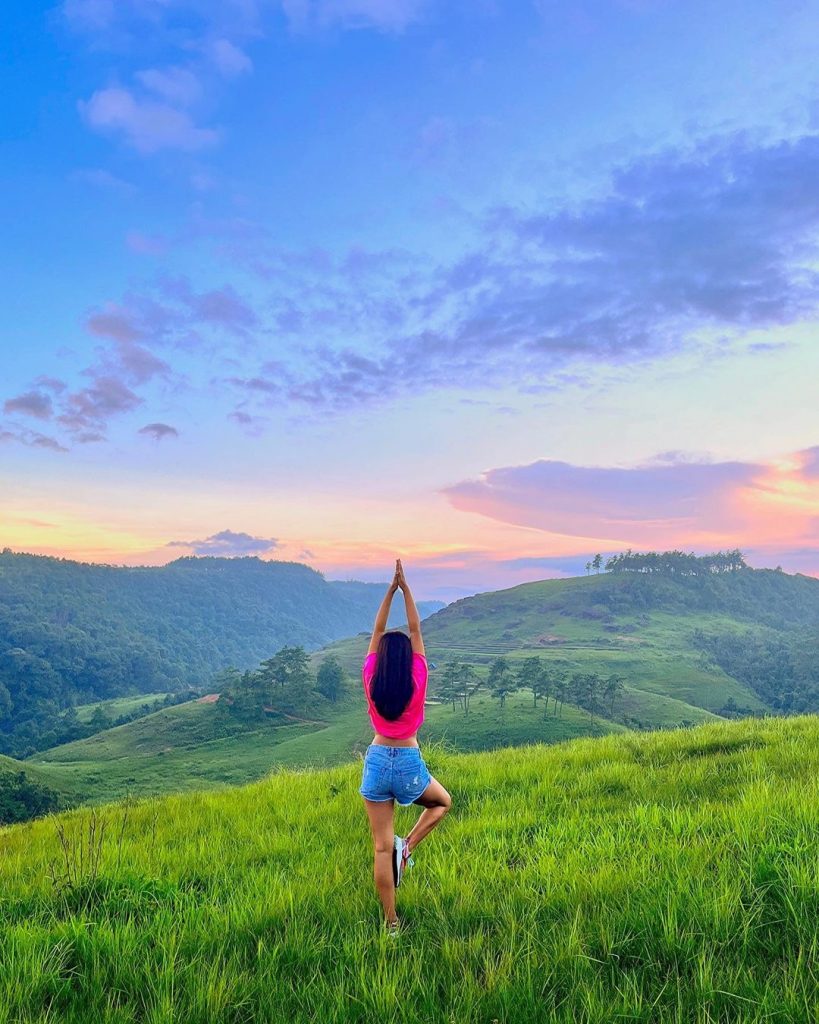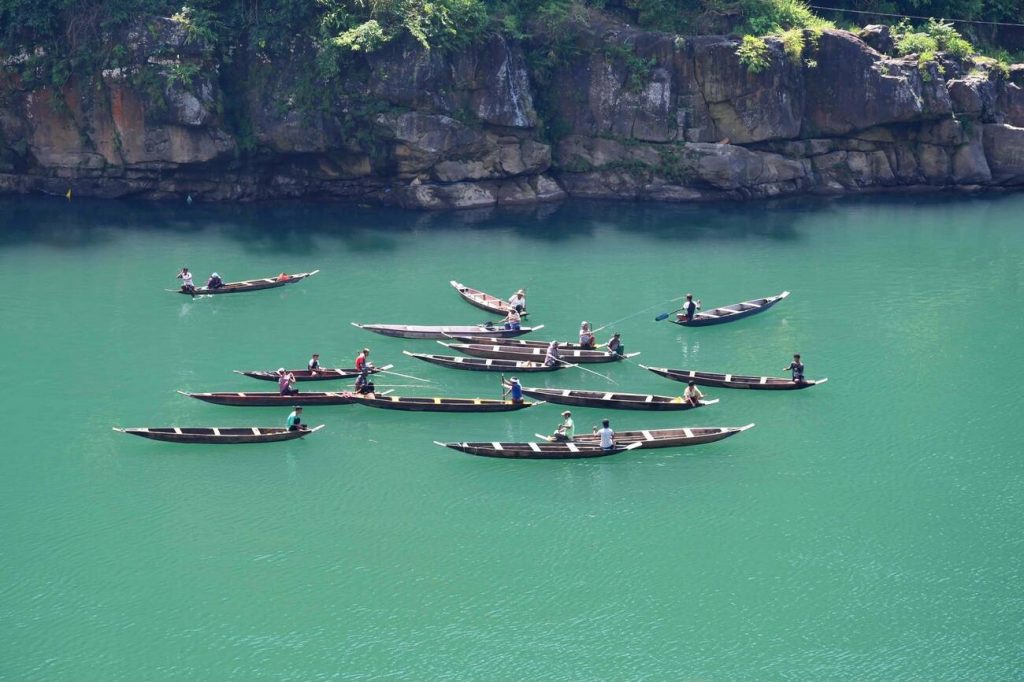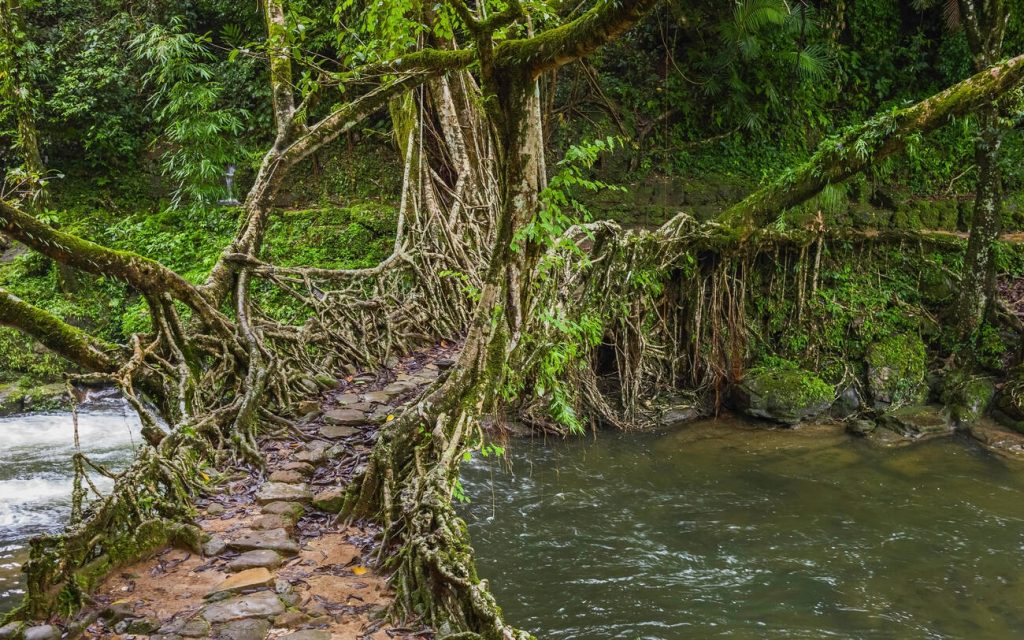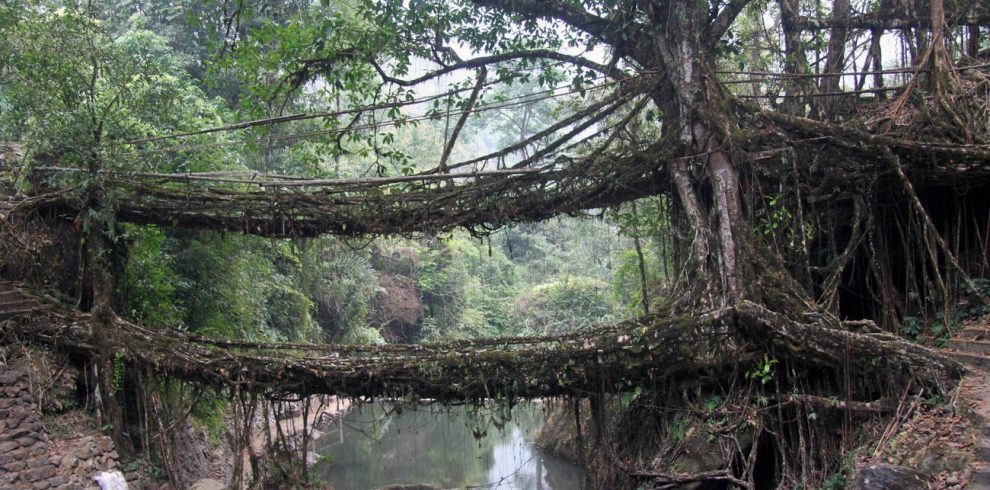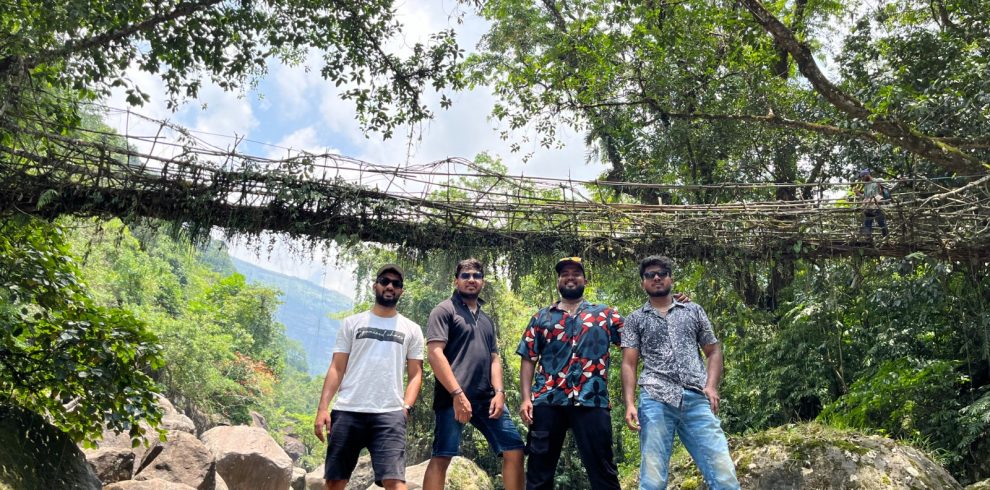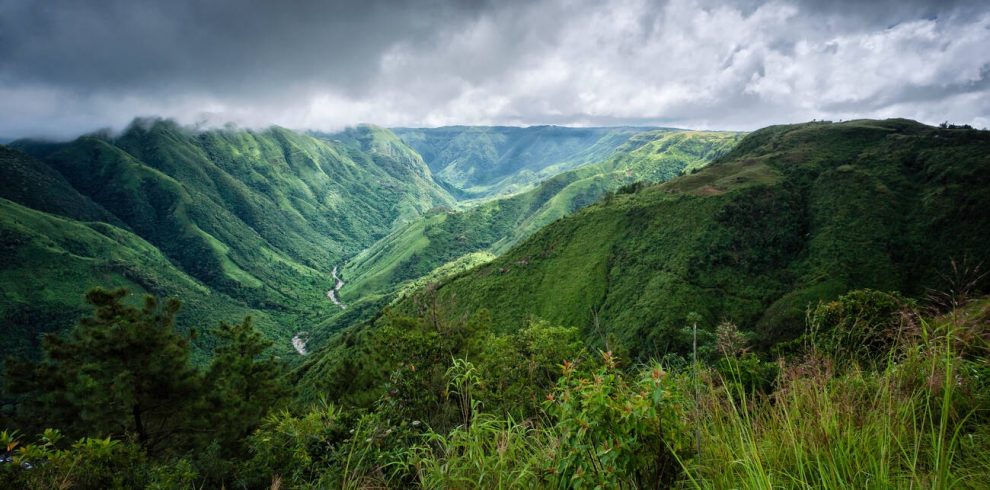Why you should visit Meghalaya?
Meghalaya Trip is famed for its roaring high waterfalls and dense forests. Its name literally means “Abode of the Clouds.” As soon as you start Meghalaya Itinerary, you will quickly realise that describing the entire mood of the state is challenging as it is a land of wonders in terms of travel or tourism. Meghalaya, often known as the “Land of the Clouds,” is a serene and exciting place. You will discover that the magical vistas that Meghalaya has to offer are nothing but maximum charm and peace as you explore this breathtaking splendor. The intriguing tunnels and crystal-clear river water make this a must-see destination. The sight of Meghalaya’s Itinerary in its lofty mountains will leave you speechless.
On January 21, 1972, Meghalaya was founded by splitting out two districts from Assam: the United Khasi Hills and Jaintia Hills, and the Garo Hills. Meghalaya was once a part of Assam, but on January 21, 1972, the districts of Khasi, Garo, and Jaintia hills were separated from Assam and formed the new state of Meghalaya.
Wei Sawdong waterfall (Meghalaya Trip )
This waterfall is around 7 kilometres from Sohra, about a 2-hour trip from Shillong. The word ‘Wei Sawdong’ conjures up images of a circular lagoon. The crystal blue water flows into a lovely three-step lagoon. This waterfall is surrounded by a tangle of lush vegetation. The road that leads to the falls is somewhat small, with mountains on either side, creating for a very stunning sight. You will be treated to a spectacular glimpse of the falls below. The descent to the bottom of the falls will take another 20 minutes. However, keep in mind that treks and trails in Meghalaya needs a decent level of fitness.
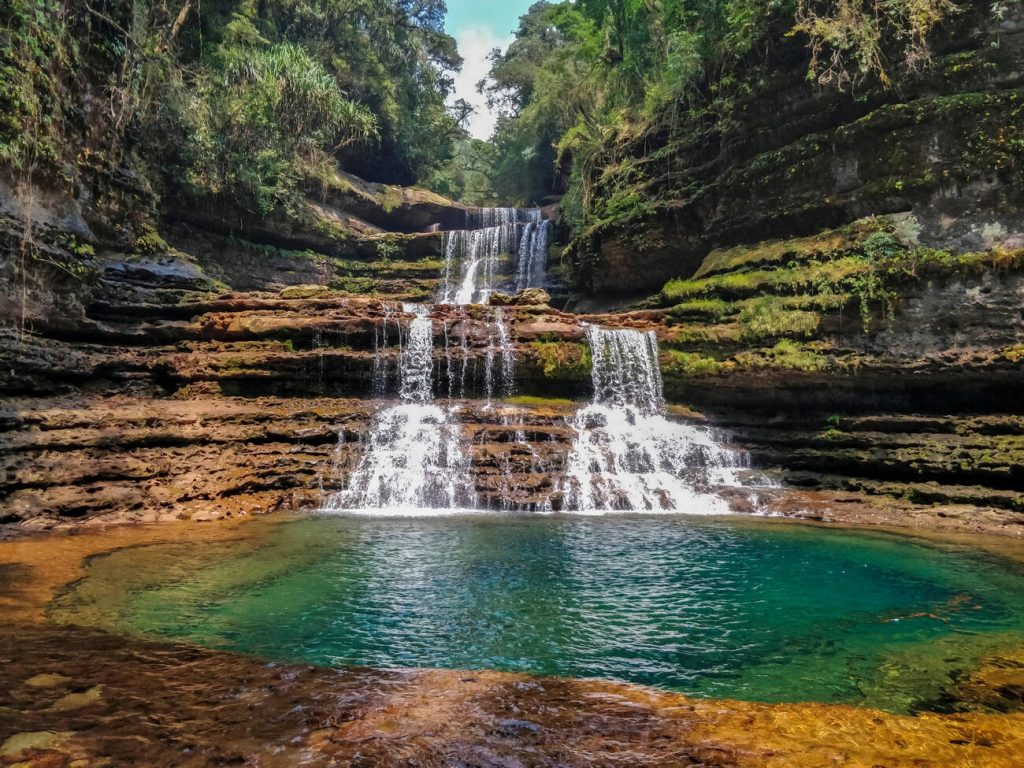
Double Decker Bridge (Meghalaya Itinerary)
Located in the thick tropical forest of Meghalaya, cloaked with rain during most part of the year are the fantastic man-made cum natural wonders of the living root bridges. Created by the people of the Khasi tribe, these roots grow from the ancient rubber trees, seen only in the northeast region. These roots are trained by the Khasis to grow in such a manner as be in the form of bridges on the top of a river. These bridges are an amazing alternative to wooden bridges that dwindle with so much rain falling on them. The most popular tourist attraction of Cherrapunjee, these double decker living root bridges are 2 bridges that are stacked one on the other, made because of the entanglement of roots.
A new root bridge takes about 15 years to get strong enough so that it can bear the weight of people who would be crossing it. Over a span of next few years, the roots become even stronger. It is believed that some of the root bridges are over five hundred years old. The most popular one is Umshiang Double-Decker Root Bridge. Not built but grown, these living root bridges are like an astonishment and are absolutely unique.
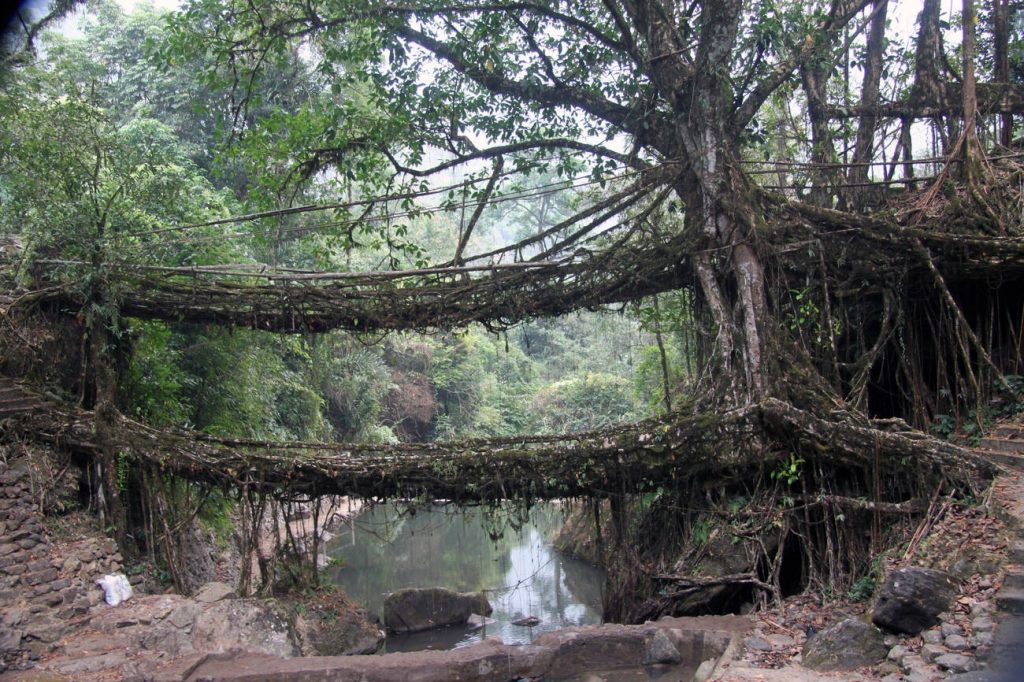
Mawlynnong
Mawlynnong has earned a reputation for being one of the cleanest villages in Asia, but a sobriquet that does more justice is that of God’s Own Garden. The fruit orchards, the rushing streams, the evergreen surroundings, the swaying palms, and the well-preserved traditions of the Khasis provide a picture-perfect stage on the edge of Meghalaya’s southern ranges.
Arguably the most famous icon of Meghalaya is found here – the Nohwet Living Root Bridge. The bridge was created by weaving the roots of the Ficus Elastica tree around a framework and continuing this process for generations. These living root bridges are a staple of Khasi traditional architecture and were important for the villages in the steep valleys and mountains, helping the people connect with each other and travel to the plains to trade. The living root bridge of Nohwet is not the only main attraction here. The Church of the Epiphany in Mawlynnong is more than a century old, a beautiful piece of European architecture tucked in the middle of this lush and verdant tropical paradise. Taste your fear of heights and climb up the tree houses close to the church. From these bamboo structures, you can gaze at the seemingly endless plains of Bangladesh that lay just beyond.
Trip Summary
You will be picked up from Guwahati in the morning and head to Umiam Lake for a splendid viewpoint before reaching Shillong. You are going to enter Police Bazaar of Shillong and visit the Cathedral of Mary Help of Christians followed by Ward’s Lake, Elephant falls etc.
You are going to explore Cherrapunji and visit Eco Park, Seven Sisters Waterfall, the naturally built limestone caves etc. Later on witness two more waterfalls called Wei Sawdong and the Daithlen.
And there’s the double decker living root bridge which you have to reach by climbing down 3000 steps. It’s a magnificent creation of nature. Further, you will also hike up to rainbow waterfall.
You will head to the Asia’s cleanest village- Mawlynnong and after exploring it, head to shnongpedeng for enjoying adventure activities and camping at night.
On day 5 you will be leaving Meghalaya and spend the last hours at Grand Canyon- Laitlum.
When is the best time to visit Meghalaya?
With its verdant valleys, clean waterfalls, and otherworldly views in the monsoon, Meghalaya is a bliss on earth. The choice of when to visit this state is yours, whether it’s for the pleasant summer days or the stunning cherry blossom trees in full bloom in the autumn.
The greatest time to visit Meghalaya, often known as the Land of Clouds, is between October and June. Most tourist spots in the state have temperatures that rarely exceed 30°C, making it an ideal getaway from the country’s summer season, which runs from March to June. It is also popular with tourists from high and moderate temperature zones throughout the autumn and winter seasons, i.e. from October to November and December to February. Meghalaya, the wettest state in the country, is not typically advised to travelers during the rainy season. The state receives an average of 250 cm of rain each year. The season starts in May and lasts through the end of September, or occasionally until the middle of October. However, one may visit the lovely state at the start or end of the monsoon season, when the rains aren’t too intense and the scenery is breathtaking.
Meghalaya in summer (April to June)
The sun kisses this rainy state, making this the ideal time of year for adventurers. The pleasant weather allows you to fulfill your curiosity while exploring the region outside. As a result, the best time to visit Meghalaya is during the summer. Because it is raining in the area, the skies are always dark and dreary throughout the day, making it an ideal time for adventurous activities. At this time of year, there will never be a dull moment in Meghalaya. Most festivals are held in the summer, when the streets are bustling with people and activity. The good weather also makes it an ideal time to go sightseeing and participate in adventure activities.
Meghalaya in Monsoon (July to September)
At this time of year, the state is drenched with rain showers. Cherrapunjee and Mawsynram, two of the world’s rainiest cities, are located in Meghalaya. This makes the monsoons a great opportunity to stay put in the hills with your family and enjoy a hot beverage while snuggled into a blanket. At this time of year, going out and exploring the area is not advised. The landscape compensates for this with misty mornings, dewy and verdant meadows, and cascading waterfalls that pound down furiously on the rocks.
Meghalaya in Autumn (October to November)
The constant rains make the autumn weather in Meghalaya chilly, wet, and humid. At this time of year, the damp state is speckled with cherry blossom trees that are in full bloom. With the arrival of the winter season, the temperatures begin to drop. This is the ideal moment to take in the splendor of the state at its peak. Autumn also heralds the arrival of mesmerizing cherry blossoms. This season, it will be adorned with pink and white blossoms, making you feel as if you are in a Japanese garden.
Meghalaya in Winter (December to February)
The weather in Meghalaya during the winter is pleasant. Temperatures continue to drop as the days pass. The days, however, are rather warm due to the sun, while the evenings bring with them some cool winds. In comparison to January and February, December is not as cold. The state will be still filled with cherry blossom in most of the parts. The weather, on the other hand, remains clear. This weather also makes it possible to go on hiking adventures and visit nearby places like Shillong, Tura, and Guwahati. Dawki and the Living Route Bridge are also worth visiting.
